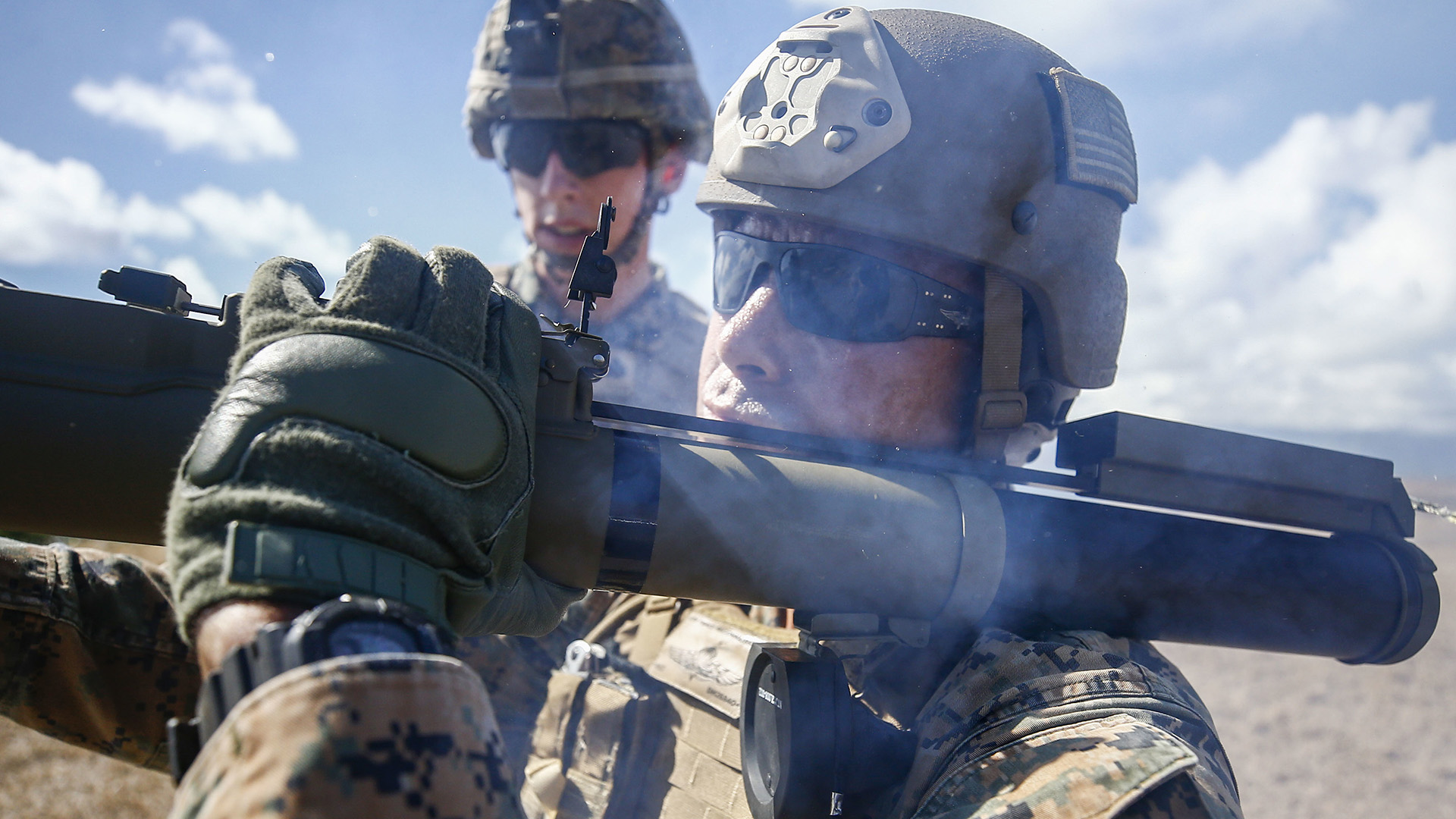

The Marine Corps plans to field a new light assault weapon by 2027 designed to produce a backblast so small that it can be fired from inside a room.
As one Ukrainian soldier demonstrated in 2022, firing a recoilless rifle whilst inside a building is a bad idea because an enclosed space does not allow the concussion to dissipate.
But the M72 Light Assault Weapon Fire from Enclosure Munition is built to reduce – though not eliminate – the risk of Marines being injured by overpressure, flying debris, and other hazards created when firing from inside an enclosed space.
The weapon has a propulsion assembly that uses a proprietary counter mass fluid system as a balance to the projectile, reducing the recoil, said Morgan Blackstock, a spokesman for Marine Corps Systems Command.
“In addition to serving as a counter mass, the fluid reduces sound, light signature, and backblast hazards during firing,” Blackstock told Task & Purpose.
Subscribe to Task & Purpose today. Get the latest military news and culture in your inbox daily.
The weapon comes in two variants: The M72A8 anti-armor and the M72A10 multi-purpose, anti-structure munition, a Marine Corps news release says. The M72A8 features a high explosive charge to penetrate armor, and the M72A10 is built to destroy structures.
Ultimately, the Marine Corps plans to buy 5,500 M72A8s and 12,000 M72A10s, Blackstock said. Both variants use standard M9 flake propellant.
“There is a 60-degree cone behind the weapon extending 5 meters that is considered the backblast area and should be clear of all personnel prior to firing the weapon,” Blackstock said. “The gunner and assistant gunner are safe from burns and overpressure injuries as long as they follow proper firing procedures, wear the required double hearing protection, and fire less than the maximum number of rounds allowable per day.”
The allowable number of rounds per 24 hours for the M72 FFE is four rounds from an enclosed position and 19 rounds in the open, Blackstock said.
It should be noted that wartime conditions often require troops to fire a lot of ordnance. In 2017, Marines burned out the barrels of their M-777 155mm howitzers pounding the Islamic State group during the battle for Raqqa. Both sides in the current war in Ukraine have also fired massive amounts of artillery shells, mortar rounds, and rockets.
Even with its specialized design to protect operators, the weapon can still cause injuries to Marines who fire it, Blackstock said.
“The M72 FFE can have blast overpressure, permanent partial hearing loss, and carbon monoxide exposure risks if fired in excess of the allowable number of rounds per day or from an enclosure smaller than the certified enclosure size of 1260 cubic feet volume (12’x15’x7’),” he said. “Normal precautions when firing weapons should be taken to ensure health effects are fully mitigated.”
The latest on Task & Purpose
- F-15E pilot, in a jet called ‘Mullet,’ packs Zyn and kills drones
- 10th Mountain Division rolls more than 500 miles across Finland, Sweden and Norway
- Army eliminates online courses to stop ‘overwhelming’ soldiers
- It’s Military Working Dog official picture day
- Colorado soldier dies in training accident at Fort Johnson, Louisiana